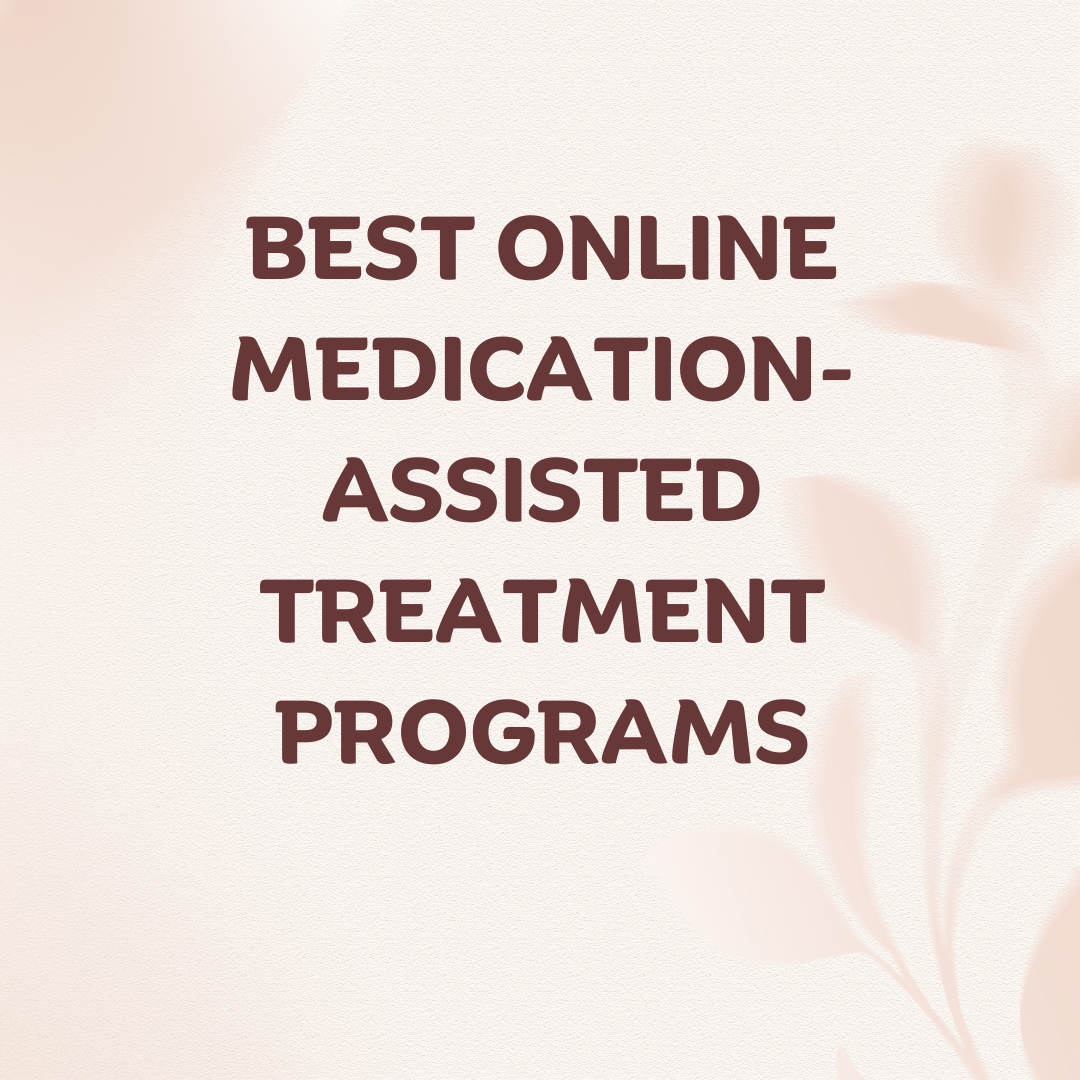
You’ve probably heard about opioid use and risk, but how much do you know about opioid withdrawal? It’s essential to understand what symptoms are characteristic of opioid withdrawal and how to manage them should you ever face them in real life. These tips will be vital information to have, whether you’re concerned for someone else or need to help yourself. You should always consult with a doctor before going off of an opioid to develop a plan to minimize the risk of withdrawal and to work with your doctor to manage any symptoms that occur.
Bicycle Health: Telehealth Treatment For Opioid Use Disorder “Best For Online MAT Program For Opioid Use Disorder” (Choosing Therapy)* Bicycle Health offers therapy, support, and medication for addiction treatment (MAT). MAT offers the lowest relapse rates for opioid use disorder, helping people to stop using opioids with minimal physical discomfort. Covered by most major insurance. Visit Bicycle Health.
What Are Opioids & Opiates?
Opioids are a type of drug that treats pain. They are prescribed often and they are also abused by many people. They are often used illicitly and problematically. They are known to be easily addictive due to their chemical make up which can cause your body to become physiologically dependent on the medication.
The Centers for Disease Control and Prevention has identified three waves of overdose deaths due to opiates in the last 30 years. In the 1990s, there was a marked rise in prescription opioid overdose deaths. The 2010s saw a surge in heroin overdose deaths. Then over the past ten years, we have witnessed synthetic opioids become a massive contributor to overdoses. 1
Natural occurring opiates (derived from poppy plants) include:
- Morphine (Morphine addiction)
- MS Contin
- Codeine (Codeine addiction)
- Opium
Synthetic opioids include:
- Hydrocodone
- Oxycodone
- Methadone
- Vicodin
- Dilaudid
- Norco
- Lortab
- Lorcet
- Opana
- Percocet
- Tramadol
- Fentanyl
- Carfentanil
Semi-synthetic opioid include:
- Heroin
How Do Opioids Affect the Body?
Opioids impact the body through their impact on our opioid receptors. These are in our brains, spinal cords, gastrointestinal tract, and other body parts, which block pain signals from the body to the brain. These changes can induce euphoric feelings, changing how we experience physical sensations, whether used as a prescription or taken for non-medical reasons.
While there may seem to be positive outcomes, the negative changes far outweigh any perceived benefits. As the brain experiences physical alteration as it adjusts to having persistent opioids in its system, it can be challenging to stop taking opioids once use has begun. This is because your receptors will adjust and your body can become physiologically dependent on opioids.
Opioids may cause the following long-term side effects, but more research is needed to know for sure. This can also be different from opioid to opioid:
- Reduced volume in the amygdala: the area of the brain called the amygdala houses our fear center. After 30 days of opioid use, a small study showed reduced volume in the amygdala that didn’t correct itself. 2
- Cardiac risk: Prolonged use can develop long QT syndrome, increasing the risk of sudden death. 3
- Hyperalgesia: People using opioids can have more experienced pain while on opioids, not less. The effect is referred to as opioid hyperalgesia.
- Sleep issues: Opioid use can disrupt sleep architecture. People may fall asleep but don’t get into stage 4 of REM sleep. This lack of proper sleep may lead to more significant fatigue, pain, and more inflammation the next day. 4
What is Opioid Withdrawal?
Opioid withdrawal can occur after only a short time using opioids, sometimes after using the medication for only 5 to 7 days. Many people take opioids for at least that long following surgeries or procedures. Most people are unaware of the risk that comes with usage, even when it’s in a small window of time or prescribed by a medical professional. People do not have to have illicit or unprescribed use to experience these symptoms.
People most at risk for withdrawal are those with some degree of psychological distress, such as:
Withdrawal can happen in the absence of addictive personality behaviors because of the physiological dependence that can happen in your body. There can be physical dependence on opioids even without the behaviors we often see with addiction to other substances. These products have a devastating negative impact on our brain functioning.
Timeline of Opioid Withdrawal Symptoms
Opioid withdrawal symptoms can start around 6-12 hours after someone’s last use of a short-acting opioid and about 30 hours after the previous use of a long-acting opioid. Symptoms can increase in intensity over time, usually peaking around 72 hours after the last use. These symptoms can last a couple of weeks to months. Medications such as buprenorphine can help manage withdrawal symptoms. It is important to work with your doctor about stopping opioids and the management of withdrawal symptoms.
Symptoms can range from mild to severe and can vary in time of onset. The withdrawal experience is miserable both physically and mentally. People don’t die from withdrawal but feel so tormented by it that they may feel death is imminent. These symptoms are the same with prescribed opioids and illicitly obtained opioids.
Withdrawal symptoms that typically begin within the first 24 hours after the last use include:
- Anxiety symptoms
- Insomnia
- Muscle aches
- Sweating
- Goosebumps
- Restlessness
- Yawning
- Runny nose
- Watery eyes
- Widened pupils
- Sweating
- Vomiting
- Diarrhea
- Shaking
- Rapid heartbeat
- High blood pressure
Help For Addiction Ria Health: Effective, Evidence-Based Alcohol Treatment 100% Online Quickly change your relationship to alcohol with our at-home program. On average, Ria Health members reduce their BAC levels by 50% in 3 months in the program. Services are covered by many major health plans. Visit Ria Health Workit Health – Online Treatment for Opioids or Alcohol, Including Medication. Modern, personalized recovery that combines medication, a supportive community, and helpful content. Covered by many insurance plans. Currently available in FL, TX, OH, MI, and NJ. Visit Workit Health Best Drug Addiction Rehab Centers – Find the best local detox or drug rehab center covered by your health insurance. Search by location, condition, insurance, and more. Read reviews. Start Your Search
Diagnosing Opioids Withdrawal
Medical professionals can diagnose opioid withdrawal by performing a clinical examination and administering a withdrawal assessment scale. Blood work does not help diagnose withdrawal. A clinical history is also obtained from the person to understand better the person’s use pattern that led to dependency or addiction.
Opioid Withdrawal Treatment
Opioid withdrawal can be effectively treated using an integrated model of care using medical support through either medication or therapy, utilizing group therapy, inpatient or outpatient care, and support groups. Research has shown that opioid treatment is more effective and safer through using medication rather than entering inpatient treatment.
Treatment Options for Mild Withdrawal Symptoms
People can go through withdrawal at home. At-home management of withdrawal can be accomplished when people start on buprenorphine or methadone. It has a better chance of success when the person has supportive people in the home to provide encouragement and distraction from symptoms. Doing this process at home is safe, and people can safely begin medication treatment (buprenorphine) at home.
Additional steps you can take to address mild withdrawal symptoms include:
- Enlisting close friends or family members to provide support as you begin recovery.
- Creating a healthy and safe environment in your home. It’s best to avoid being around people continuing to use opioids.
- Drink plenty of fluids.
- Use over-the-counter medications like acetaminophen and ibuprofen for symptomatic relief.
- Talking with your doctor about all of the symptoms you are experiencing so they can help you correctly manage the symptoms.
Treatment Options for Severe Withdrawal Symptoms
People may think they should seek emergency treatment for withdrawal, but that is usually unnecessary. Their fear and anxiety often make them feel like they are in danger or at risk of death. When using medication during withdrawal, they can feel confident that they will be able to get through the symptoms. Rapid detox (under anesthesia) is not recommended as the outcomes do not support that approach to remaining sober.
Medications that can help alleviate severe withdrawal symptoms include:
- Buprenorphine (Suboxone products): This medication is safe, well-tolerated, and easy to use and is considered the most effective medication to use for managing the pain and depression of withdrawals. It has a low risk for developing Suboxone addiction.
- Methadone: A form of opiate, it can be administered through a methadone clinic and is usually dosed daily to “please” the opioid receptor, which no longer receives chemical signals.
- Naltrexone: Also known as Vivitrol, it can only be used when someone has been off opioids for seven days, making it a poor choice for immediate withdrawal relief.
Bicycle Health: Telehealth Treatment For Opioid Use Disorder Medically Assisted Treatment For Addiction (MAT) Same Day Prescriptions Often Available 100% Online Covered By Most Major Insurance
Coping with Opioid Withdrawal Symptoms
There are some things people can do to manage their symptoms and find some relief. It’s impossible to prevent symptoms, but there are ways to minimize physical sickness and emotional distress. Even though medications provide the most effective withdrawal management, these tips can help.
9 strategies that can help alleviate opioid withdrawal symptoms include:
- Stay hydrated. Drinking plenty of fluids helps with nausea and headaches.
- Eat regularly. As you work through withdrawal, it is an excellent time to enjoy some comfort foods that won’t upset your system.
- Seek care and support. This support network should be from the people who care about you and want to help as well as your doctor and medical team.
- Take your medication as prescribed. Adding additional medication side effects to withdrawal symptoms can exacerbate the process.
- Stay connected with your prescriber. Having a professional medical on-call to help is essential when you have questions or concerns.
- Talk with your therapist. If you don’t have one, this is an excellent time to find one. Look for someone who has expertise in working with opioid withdrawal.
- Ensure that you have a safe home environment. Having added stressors around you will only bring more attention to your symptoms.
- Look for progress, not perfection. Withdrawal is not a pretty experience for anyone, and assuming it will be a walk in the park will only make managing symptoms that much more challenging to overcome.
- Have self-compassion. Take comfort in knowing that you are taking the necessary steps toward healing and recovery.
Complications of Opioid Withdrawal
There are no long-term health risks to coming off opioids. There are countless benefits to doing so. Living without opioids will enhance your health and well-being. After withdrawal, most people stay on medication for a minimum of a year. As long as the medication is helping a person live without opioids, it’s considered a successful treatment, and there is no need to feel any urgency about stopping the medication.
Post-acute withdrawal syndrome (PAWS) is a set of impairments that can continue for months following initial withdrawal.
Some of the symptoms of PAWS may include:
- cognitive difficulties
- memory problems
- irritability
- cravings
- relationship issues
- apathy, or pessimism
Finding a therapist to help you with negative feelings post-withdrawal. Finding a therapist for your needs is easy and can be done using an online therapist directory.
Final Thoughts
With any withdrawal, side effects vary based on the individual. It’s crucial to discuss stopping opioids with your medical and behavioral care team. It’s also helpful to obtain the support of your family before you begin. Once you’ve stopped taking opioids you’ll have less pain, better functioning, and a brighter future.
To help our readers take the next step in their mental health journey, Choosing Therapy has partnered with leaders in mental health and wellness. Choosing Therapy is compensated for marketing by the companies included below. Online Treatment for Opioids or Alcohol, Including Medication. Workit Health – Modern, personalized recovery that combines medication, a supportive community, and helpful content. Covered by many insurance plans. Currently available in FL, TX, OH, MI, and NJ. Visit Workit Health Alcohol Treatment – Cut Back or Quit Entirely Ria Health – Quickly change your relationship to alcohol with our at-home program. On average, members reduce their BAC levels by 50% in 3 months in the program. Services are covered by many major health plans. Visit Ria Health Drug Addiction Rehab Centers Recovery.com – Find the best local detox or drug rehab center covered by your health insurance. Search by location, condition, insurance, and more. Read reviews. Start Your Search Telehealth Treatment For Opioid Use Disorder Bicycle Health – offers therapy, support, and medication for addiction treatment (MAT). MAT offers the lowest relapse rates for opioid use disorder, helping people to stop using opioids with minimal physical discomfort. Covered by most major insurance. Visit Bicycle Health Drinking Moderation Sunnyside – Want to drink less? Sunnyside helps you ease into mindful drinking at your own pace. Think lifestyle change, not a fad diet. Develop new daily routines, so you maintain your new habits for life. Take a 3 Minute QuizAdditional Resources
For Further Reading
- The Dangers of Mixing Hydrocodone With Alcohol
- The Opioid-Free Pain Relief Kit: 10 Simple Steps to Ease Your Pain
- In Pain: A Bioethicist’s Personal Struggle with Opioids by Travis Rieder
- SAMHSA National Helpline 800-662-4357
- WeConnect Recovery App Review 2022: Pros & Cons, Cost, & Who It’s Right For
- Bicycle Health Review 2022: Cost, Pros & Cons, & Who It’s Right For
Best Online Medication-Assisted Treatment Programs Online medication-assisted treatment programs are fairly new to the telehealth industry, but existing companies are expanding quickly with new programs emerging every day. It’s important to explore your options and understand the level of virtual care available so you can choose the best addiction treatment program for you.
Best Mindful Drinking Apps If you’re thinking about joining the sober curious movement and you’d like to cut back on drinking, mindful drinking apps are a great place to start. Practicing mindful drinking can take some time, attention, and patience, but with the help of the right app, you can completely transform your relationship with alcohol.





